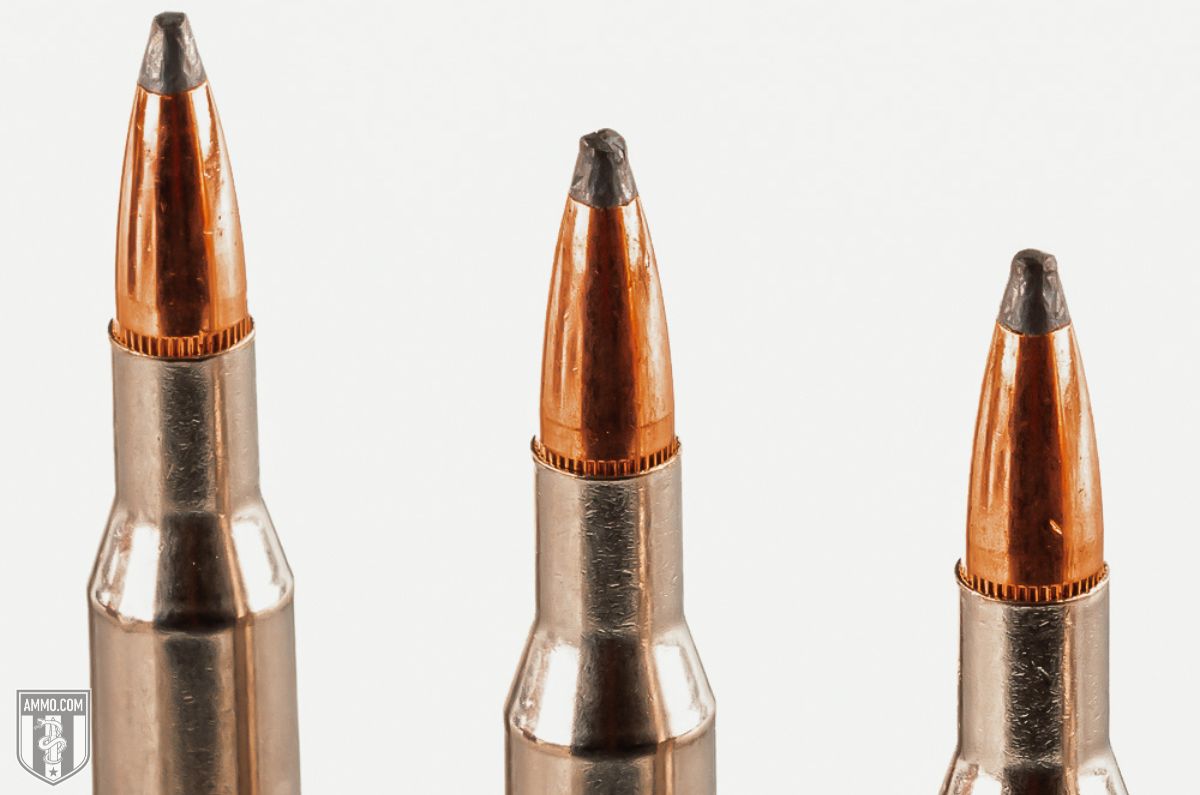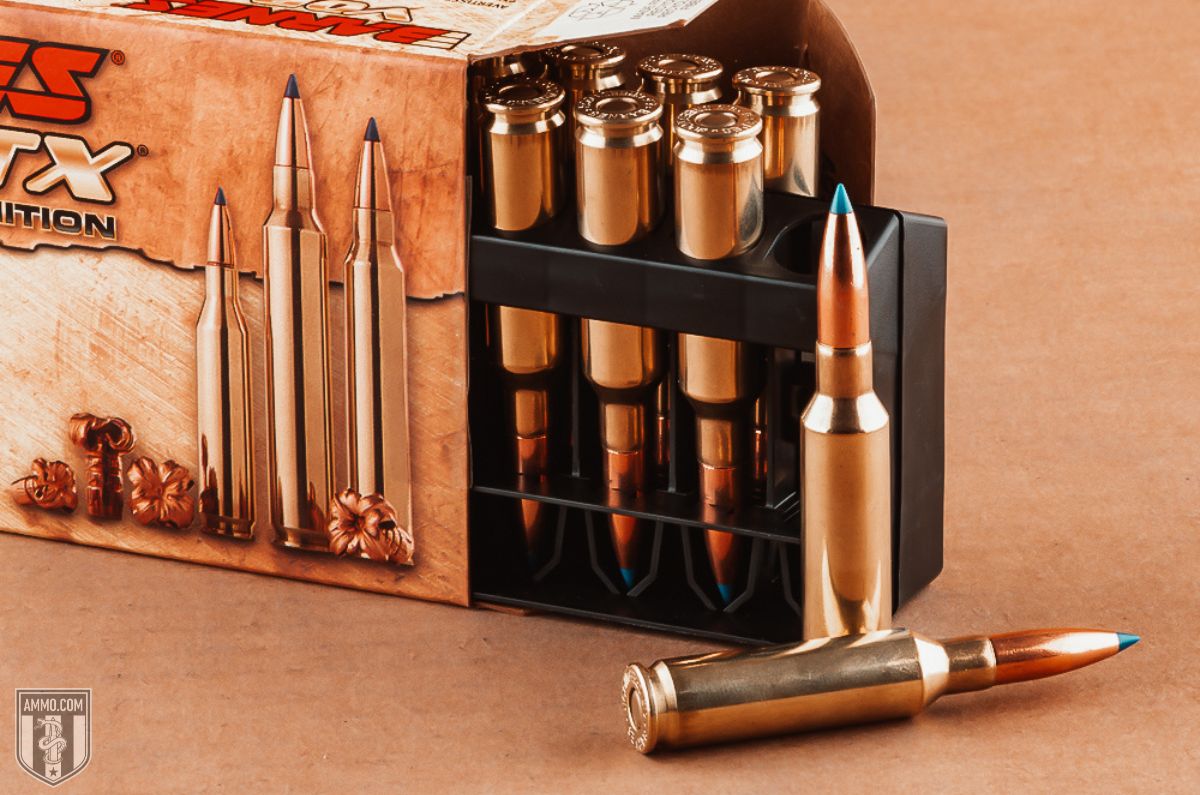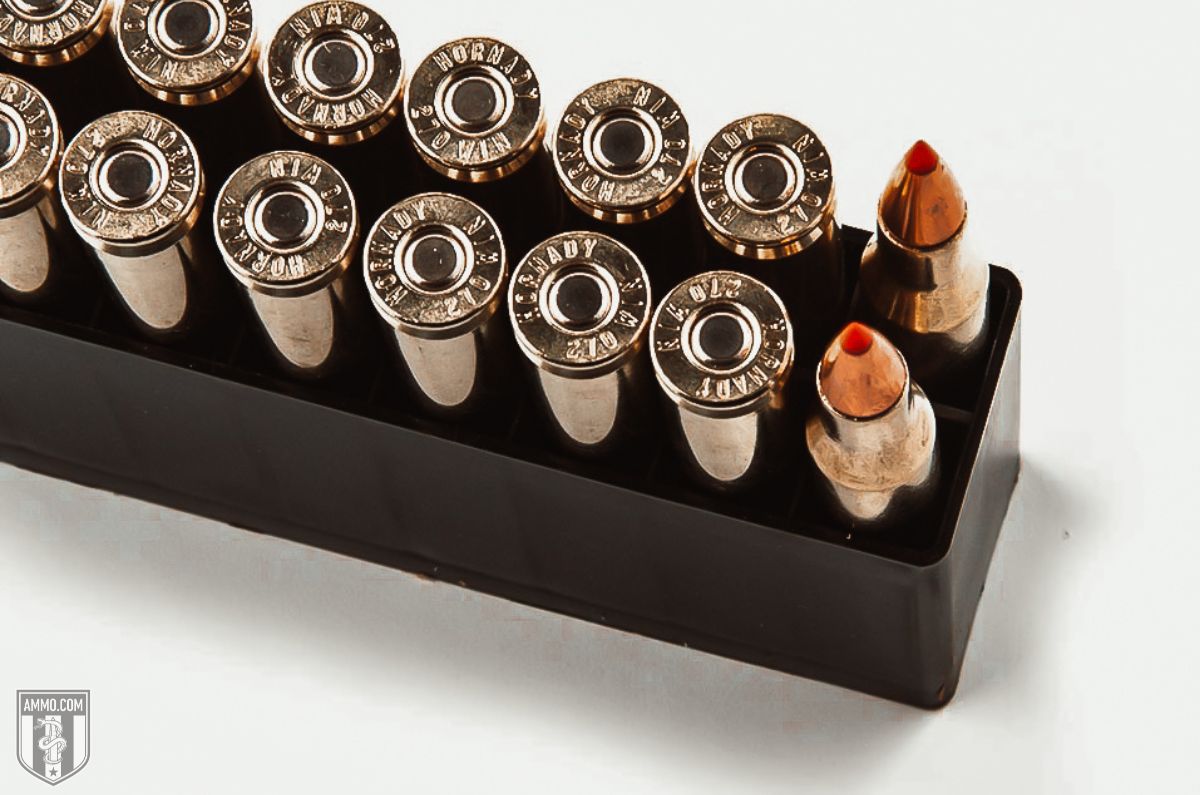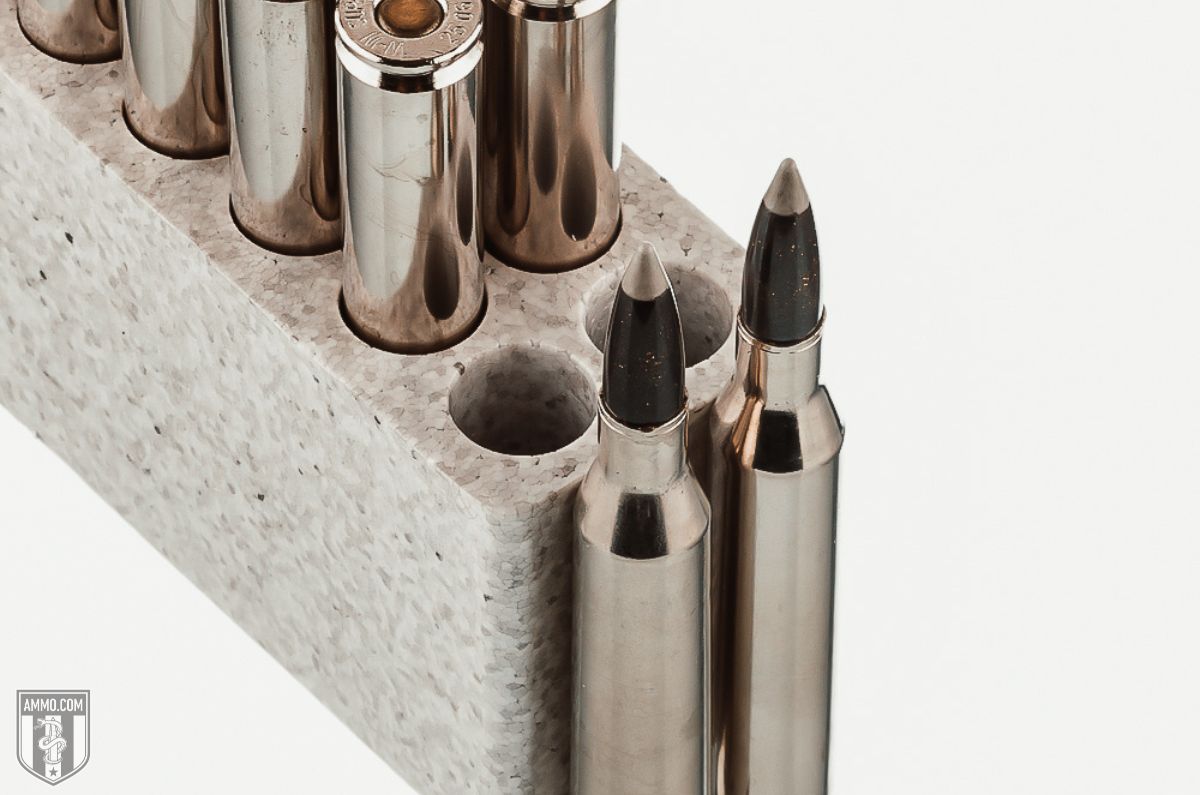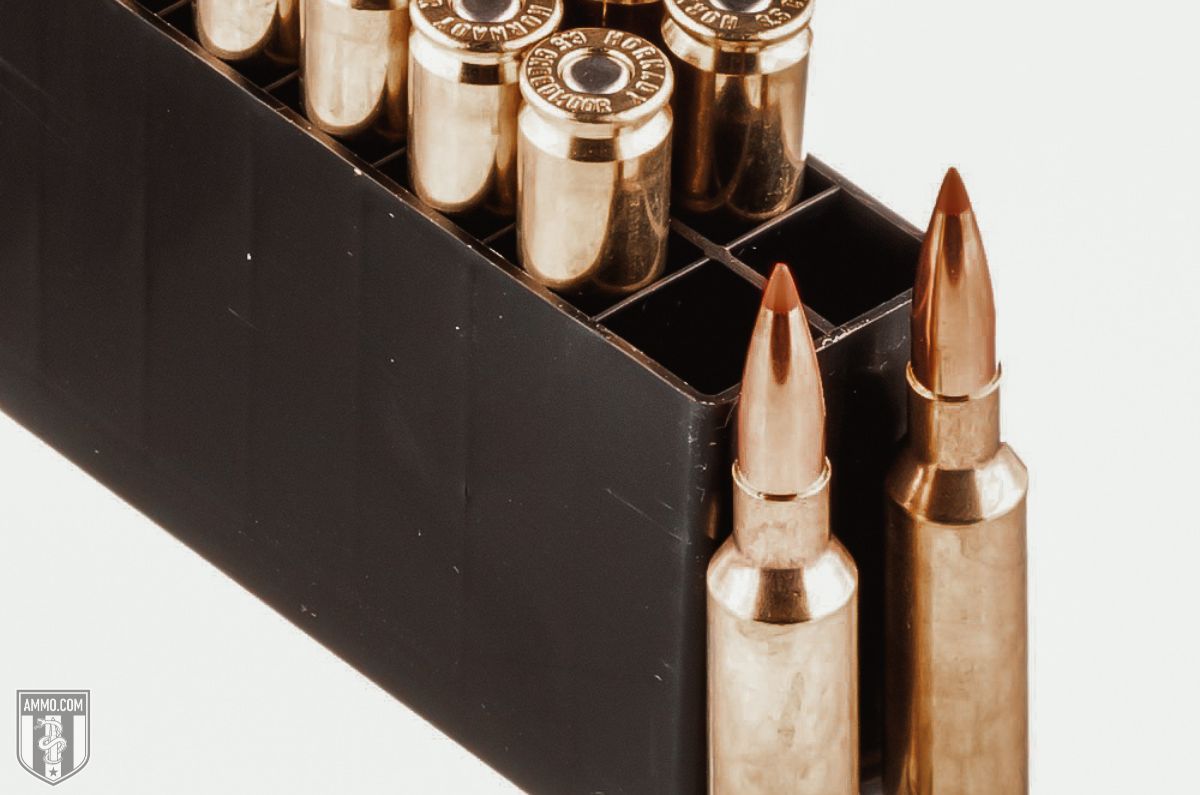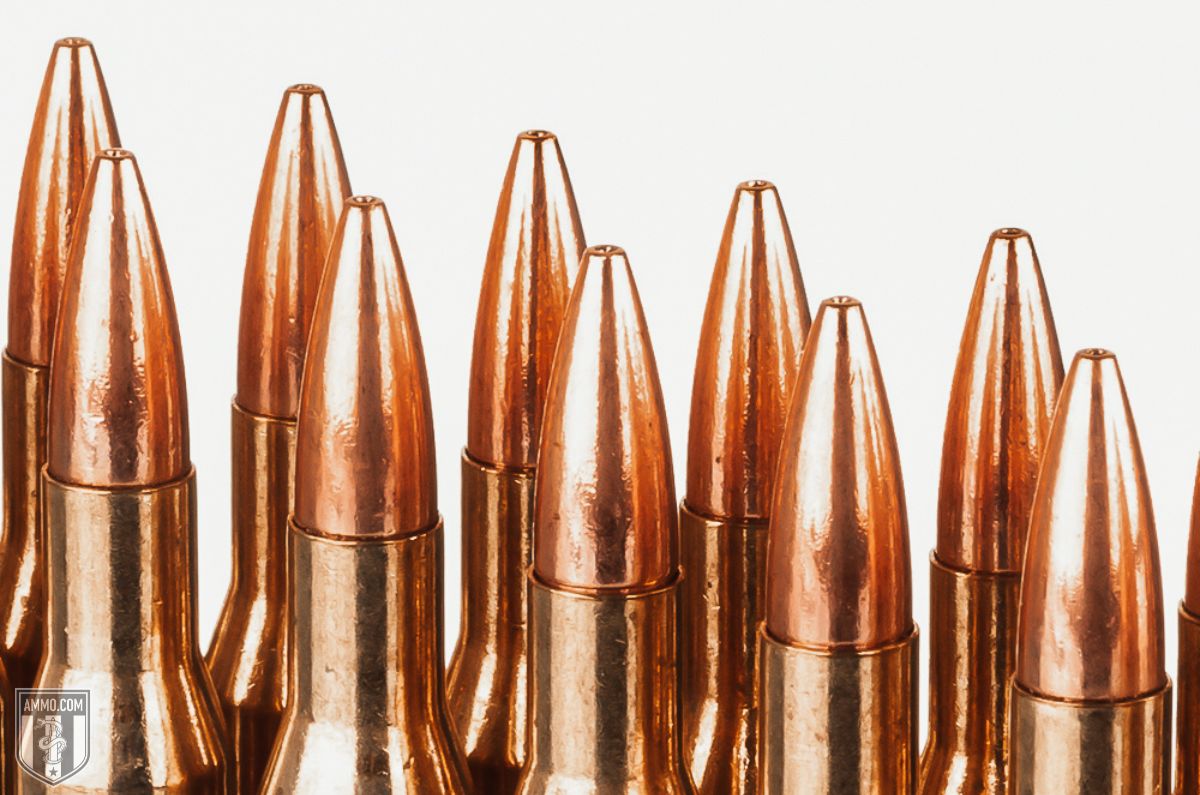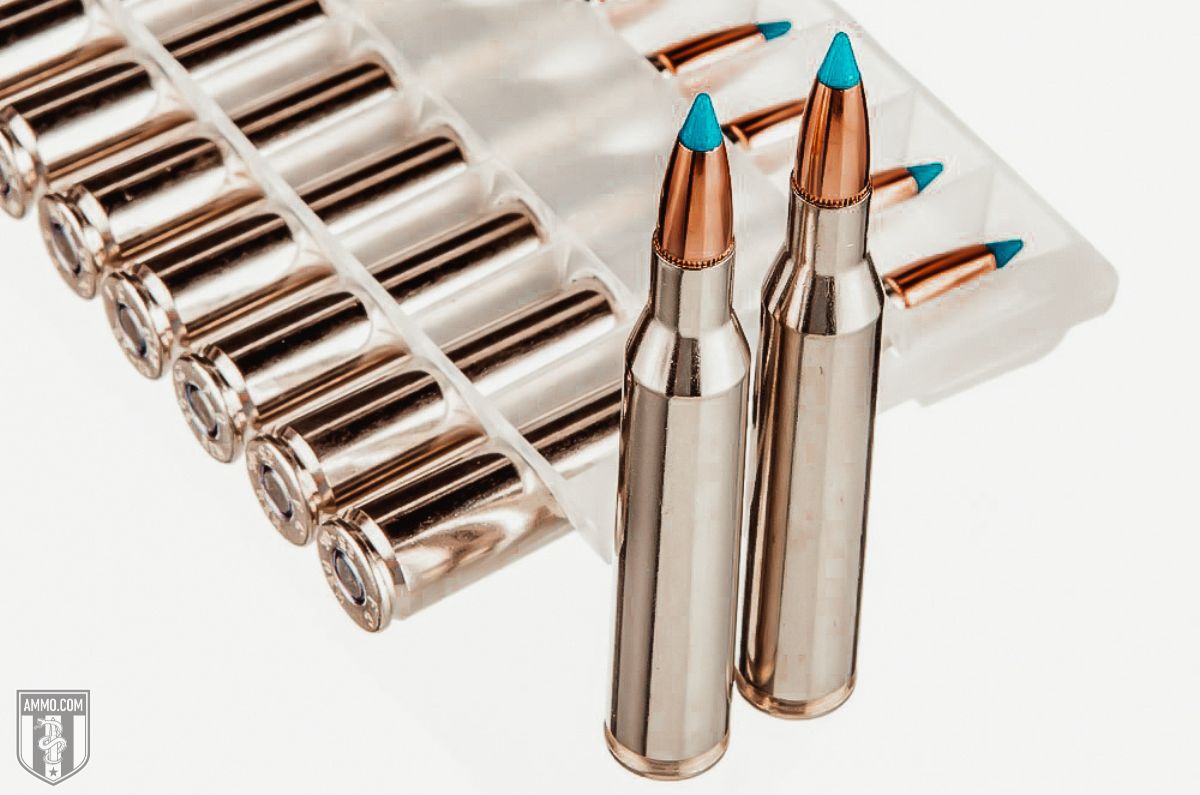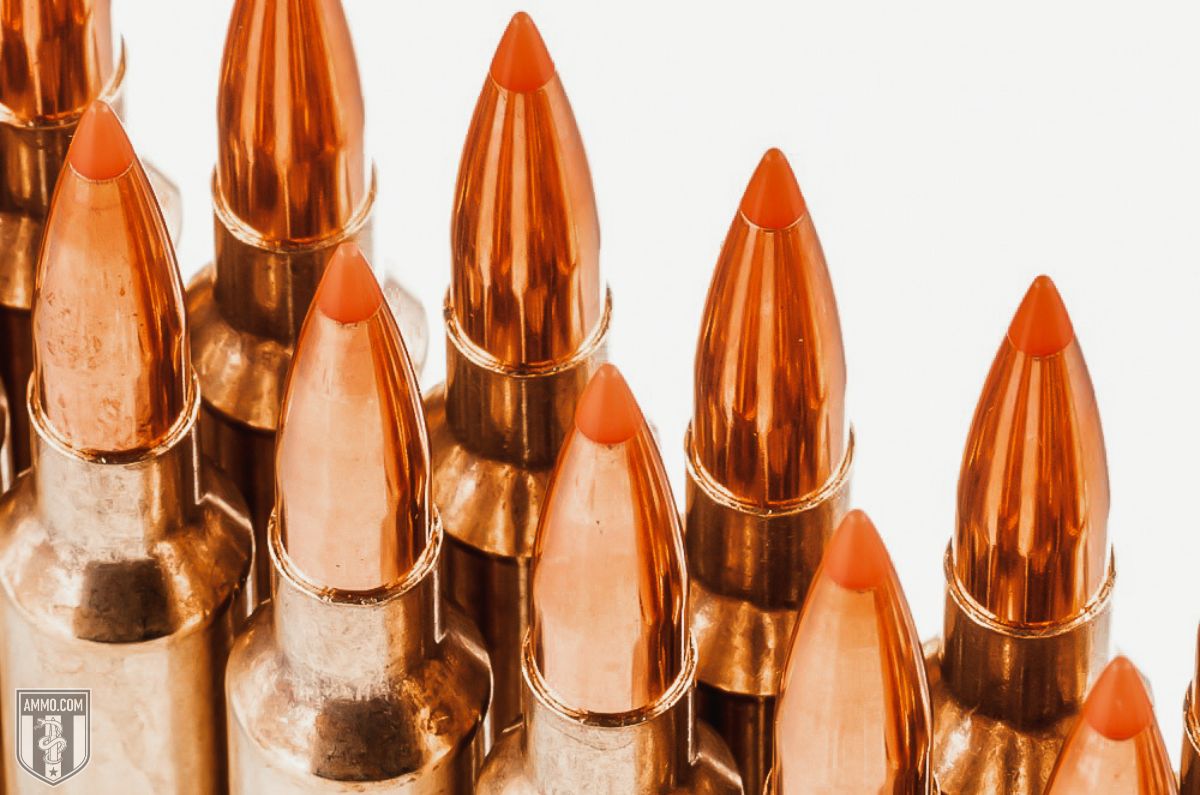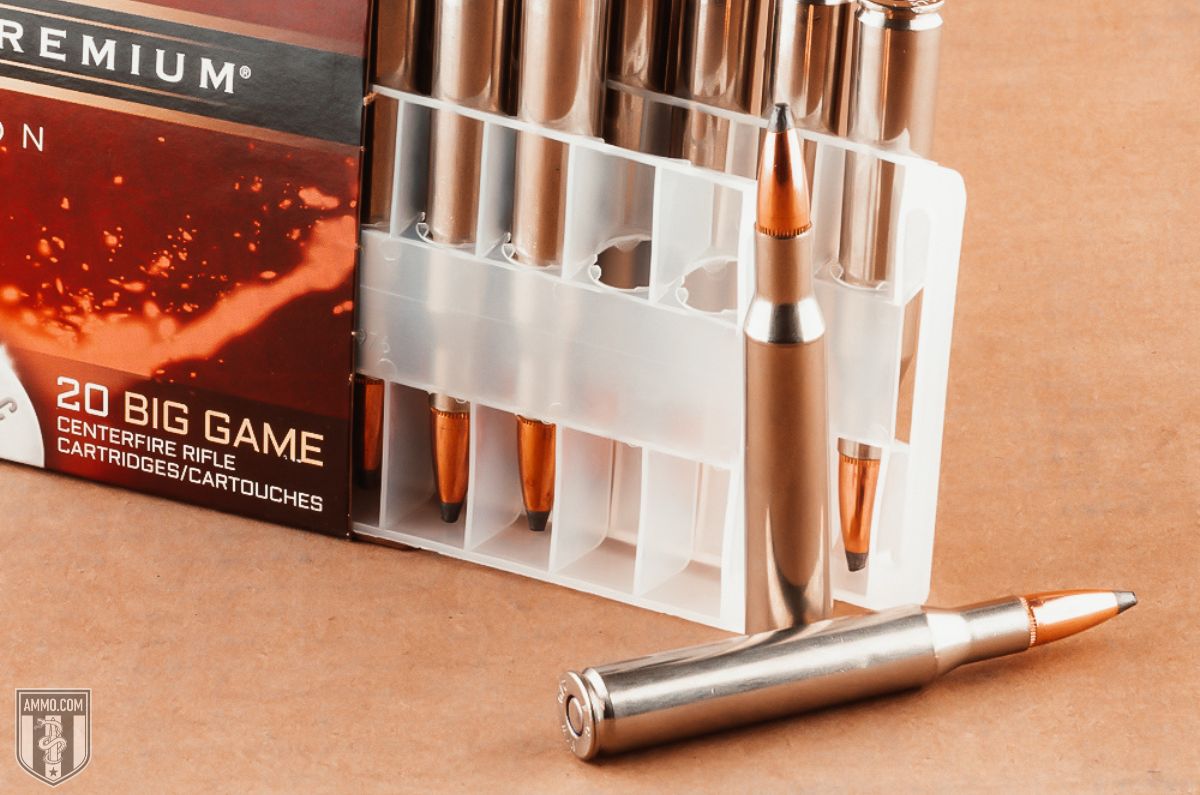6.5 Creedmoor vs 270 vs 25-06: From the Firing Line to the Tree Stand
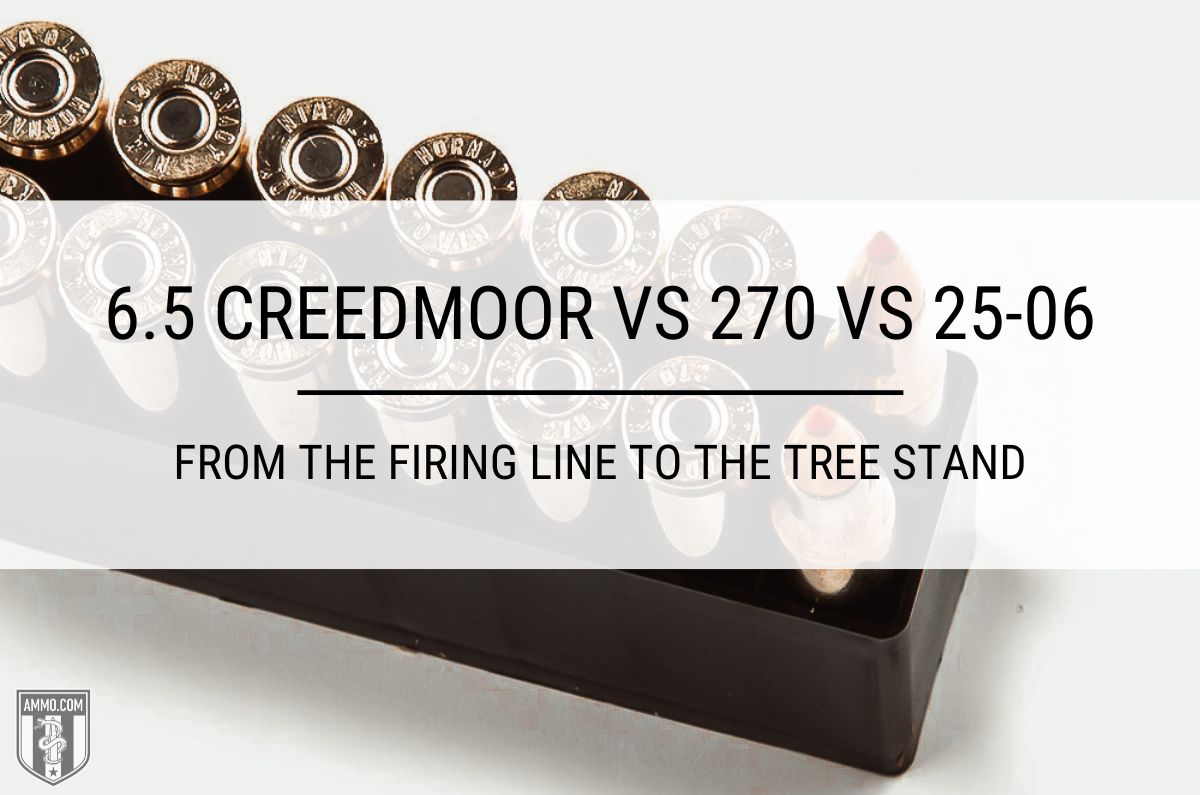
In 2007, Hornady took the competitive long-range shooting community by storm with the release of their new cartridge, the 6.5 Creedmoor. Since its release, the 6.5 Creedmoor has seen its popularity grow every year to the point where it is now a household name in the shooting community.
After finding success on the competitive firing line thanks to a flat trajectory and low recoil, many shooters and ammo manufacturers sought to transition the 6.5 into the woods and make it into a big game hunting cartridge.
Since then, comparisons were drawn between two of the most stalwart deer hunting cartridges on the market that are not 30-caliber, the 270 Winchester and the 25-06 Remington.
This has led many hunters to question if a competition round like the 6.5 Creedmoor offered any real ballistic advantages over rounds like the 25-06 Rem and 270 Win that had proven themselves in the woods for over 90 years.
In this article, we will evaluate the 6.5 Creedmoor vs 270 vs 25-06 to help you understand the differences between the two and give you a clearer understanding of which cartridge is best for your target shooting and/or big game hunting needs.
What is the difference between the 6.5 Creedmoor, 270 Winchester, and 25-06 Remington?
The primary difference between the 6.5 Creedmoor, 270 Winchester, and 25-06 Remington is their intended purpose. The 25-06 and 270 were specifically designed for hunting game animals while the 6.5 Creedmoor was designed for competitive shooting first and has been adapted for big game hunting.
Cartridge Specs
When evaluating centerfire cartridges, it’s a good idea to analyze the cartridge specs to gain more knowledge of each.
The 25-06 Remington (25-06 Rem or 25 06 for short) is a rifle cartridge that was developed ahead of its time. As the eldest of the three cartridges, the 25-06 began its life as a wildcat cartridge known as the .25 Niedner. Developed by A.O. Niedner in 1920, the 25-06 is essentially a 30-06 case necked down to take a 0.257” diameter bullet.
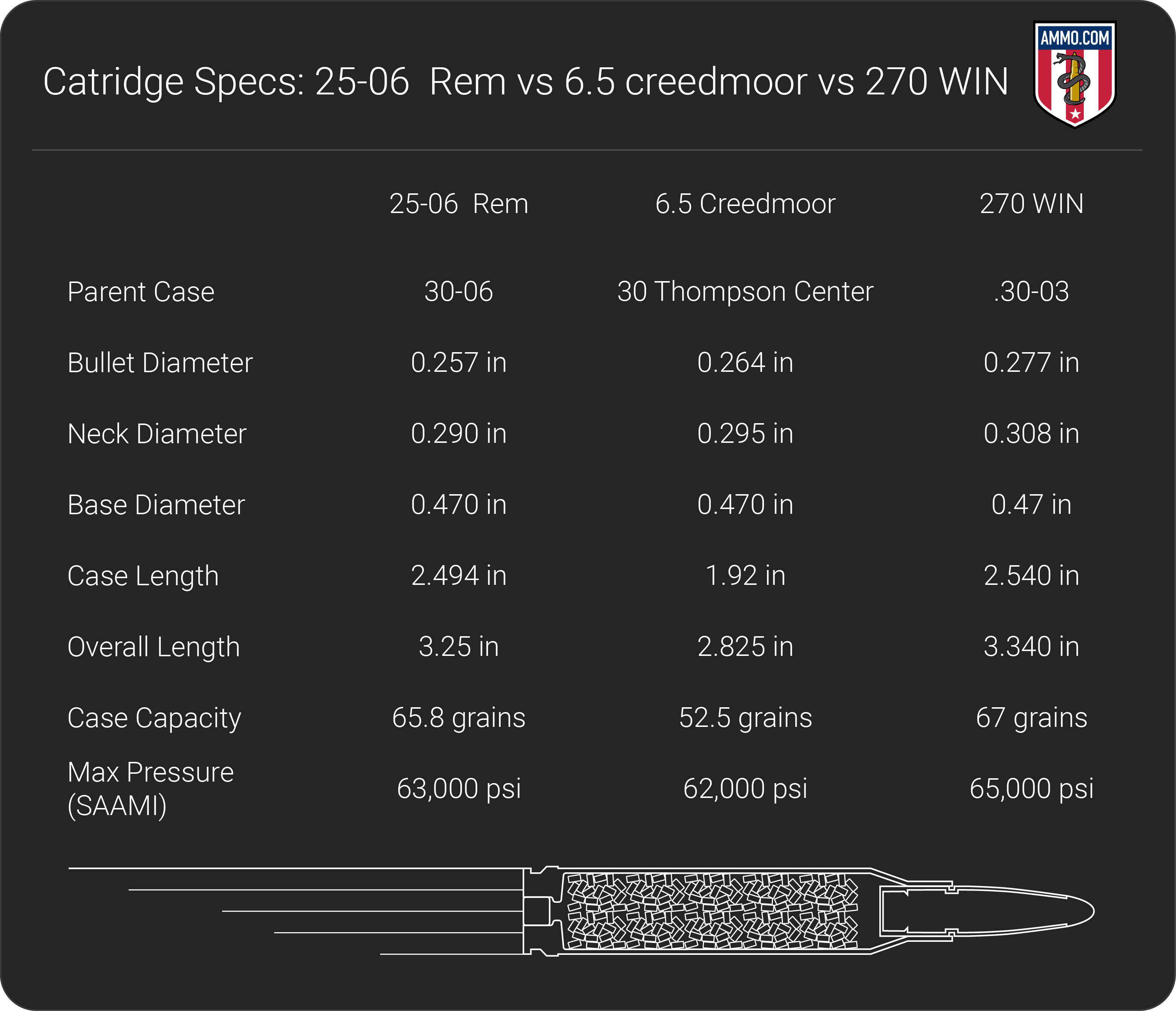
Although the 25 Niedner offered some advantages over the 30-06, it lacked the slow burning powders needed to maximize its performance. Therefore, it lived in relative obscurity for nearly 50 years until Remington standardized the cartridge in 1969 and chambered it in its hugely successful Model 700 bolt-action rifle.
In contrast, the 270 Winchester (or 270 Win for short) was released in 1923 and received almost instant commercial success. The 270 was developed using the 30-03 as a parent case, which was the progenitor to the 30-06 Springfield. This means the 270 Win is essentially a 30-06 case necked down to accept a 0.277” (7mm) diameter bullet.
As the youngest of the three, the 6.5 Creedmoor was released in 2007 and became extremely popular in long range competitive shooting circles. The Creedmoor was developed in part due to a gripe session between legendary Service Rifle competitor, Dennis DeMille, and Dave Emary, the senior ballistician for Hornady Ammunition at the time.
Instead of using the 30-06 as a parent cartridge, the 6.5 Creedmoor was developed by necking down a 30 Thompson Center case to accept a 6.5mm or 0.264” diameter bullet and was initially developed for long range shooting competitions.
The 6.5 Creedmoor is also called the 6.5 CM, 6.5 Creed, or can be misspelled as “Creedmore”.
When looking at these three cartridges side-by-side there is an obvious size difference between them. The 270 and 25-06 tower over the 6.5 CM by over half an inch. The 270 Win has an overall length of 3.34” compared to 3.25” for the 25-06 and 2.825” for the 6.5 CM.
In terms of case length, the 270 and 25 06 are nearly identical at 2.54” and 2.494”, respectively. However, the 6.5 CM case is considerably shorter at 1.92”.
The difference in overall length means that the 6.5 CM can fit into a short action rifle like a 308 Winchester, which are often lighter and have a shorter bolt throw. In contrast, the larger 270 Win and 25-06 Rem require a long action like their older cousin, the 30-06 Springfield.
This massive difference in case length translates directly to case capacity as the 270 Win and 25-06 can hold approximately 15% more powder than the 6.5 Creed. The case capacity for the 270 measures 67 gr, 65.8 gr for the 25-06, and 52.5 grains for the 6.5.
All three rounds have similar maximum pressures per SAAMI specs. The 270 is rated to handle the most chamber pressure at 65,000 psi, compared to 63,000 psi for the 25-06 and 62,000 psi for the 6.5 CM.
However, the biggest difference between these rounds is the bullets they fire.
The 270 Win fires the widest bullets of the bunch measuring 0.277” in diameter. Bullet weights for the 270 range between 85 and 180 grains with the 130 gr, 140 gr, and 150 gr projectiles being the most popular.
The 6.5 Creedmoor sits between the 270 and 25-06 in this case as it was designed to fire a bullet diameter of 6.5mm or 0.264”. The Creedmoor can fire bullets between 95 and 160 grains with the 120, 130, and 140 grain bullets being the most prevalent.
Finally, the 25-06 Rem was designed to fire the thinnest bullets of the three, measuring 0.257” in diameter. Capable of firing lighter bullets between 75 and 120 grains, the 100 gr, 117 gr, and 120 grain factory loads are the most common to find.
In general, the 270 Winchester and 6.5 Creedmoor can fire heavier bullets than the 25-06, but does this mean that the 25-06 will have less recoil than the other two rounds? Let’s find out!
Recoil
Recoil is an important consideration when purchasing a new rifle as a round with heavy recoil will be more difficult to control and will slow your rate of follow up shots. The potential for flinching is also an issue for cartridges with heavy recoil.
Felt recoil will differ from shooter to shooter and is often dependent on firearm choice, stance, and your chosen factory ammo or handloads. However, free recoil is a more objective measure of how hard a cartridge hits based on firearm weight, muzzle velocity, powder charge, and bullet weight.
For this recoil comparison, it will be impossible to provide a true apples-to-apples comparison as the 6.5 CM and 270 Win fire considerably heavier bullets than the 25-06. All three calibers are offered by Hornady in their Precision Hunter line of ammo; therefore, these cartridges were selected for comparison.
All three rounds fire the Hornady ELD-X bullet that is popular with big game hunters for its controlled expansion and weight retention. The 6.5 Creedmoor load fires a 143 gr bullet with a muzzle velocity of 2,700 fps, the 270 Winchester load fires a 145 gr bullet traveling at 2,970 fps, while the 25-06 load fires a 110 gr bullet at 3,140 fps.
The rifle used for this comparison will be the Winchester Model 70 Featherweight which is a popular bolt-action rifle used for big game hunting. It is offered in all three calibers and weighs 6.5 lbs on average.
Given these rounds, the 270 Win will have 26.01 ft-lbs of free recoil, 18.51 ft-lbs for the 25-06, and 17.19 ft-lbs for the 6.5 CM. This means the 6.5 Creedmoor will have around 50% less recoil than the 270 when comparing similar bullet weights.
The low recoil of the 6.5 Creedmoor is one reason it has been so successful in the long-range target shooting community, as it delivers excellent ballistics and a flat trajectory with minimal impact to the shooter’s shoulder.
However, are those ballistics superior to the 270 Winchester or the 25-06? In the next section we will compare Hornady 6.5 Creedmoor ballistics to the 270 and 25-06 to see who comes out on top.
Muzzle Velocity, Kinetic Energy, and Trajectory
There’s a lot of hype surrounding the long range capabilities and 6.5 Creedmoor ballistics, but can the new cartridge take down the deer hunting stalwarts, the 270 Win and 25-06 Rem? To compare the ballistics of each cartridge we’ve selected two different rounds for each caliber.
For the 6.5 Creedmoor we’ve selected the Hornady Superformance 129 gr SST and 143 gr ELD-X Precision Hunter. For the 270 Winchester we’ve selected the 145 gr ELD-X factory ammo as well as the Nosler 150 gr Accubond Long Range load. Lastly, for the 25-06 Rem we selected the 100 gr Barnes TTSX hunting ammo as well as the 110 gr ELD-X from the recoil section.
Although a 1,000 yard shot is not typical (or advisable) for big game hunting, it was included in the ballistics table to display the long-range target shooting capability of all three rifle cartridges.
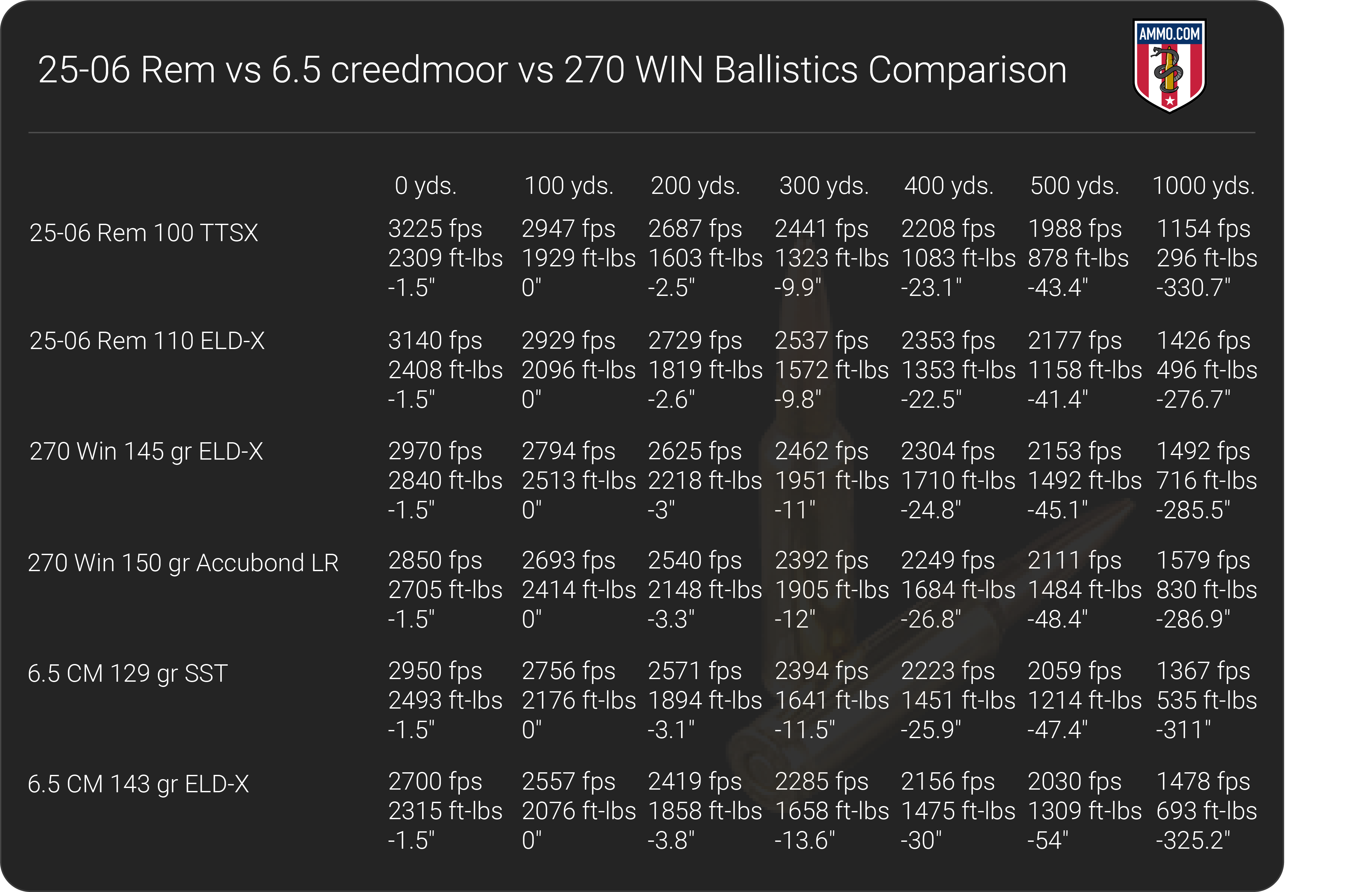
In terms of muzzle velocity, the 25-06 rounds clearly dominated the field with the 100 gr TTSX bullet having the highest velocity at 3,225 fps followed closely by the 110 gr ELD-X at 2,140 fps. The 143 gr ELD-X for the 6.5 Creedmoor had the lowest muzzle velocity at 2,700 fps.
Both 270 cartridges and the 130 gr SST for 6.5 CM were roughly equivalent in terms of muzzle velocity being separated by just over 100 fps for all three factory loads.
On impressive aspect to note is that all six factory loads were still supersonic at 1,000 yards. However, the 100 gr TTSX was just barely so at 1,154 fps.
In terms of muzzle energy, the 270 dominates holding around a 300 ft-lbs advantage of the Creedmoor and 400 ft-lb advantage over the Remington rounds. The 270 Win 145 gr ELD-X had the highest muzzle energy at 2,840 ft-lbs followed closely by the Accubond at 2,705 ft-lbs. Both Creedmoor and 25-06 loads shot below 2,500 ft-lbs at the muzzle.
The 150 gr Accubond LR was the most efficient bullet at conserving kinetic energy at range, measuring 830 ft-lbs at 1,000 yards while the 143 gr ELD-X and 145 gr ELD-X were relatively equivalent averaging 700 ft-lbs.
Of the six factory loads analyzed, the 110 gr ELD-X for the 25-06 had the flattest trajectory at all ranges over 200 yards. This should not come as a surprise, as lighter bullets traveling at higher velocities typically have a flatter trajectory than heavier bullets traveling at slower speeds.
At 1,000 yards, the 25-06 110 gr ELD-X had the lowest bullet drop of all loads at -276.7”. Both 270 Win loads had relatively identical trajectories at 1,000 yards and had slightly less than -10” more bullet drop than the 110 gr ELD-X. As the 25-06 100 gr TTSX was approaching transonic speeds at 1,000 yards, it had the most bullet drop of all factory loads analyzed at -330.7”
As much as shooters hype up the 6.5 Creedmoor for its trajectory, the 270 Win had less bullet drop than the 6.5 at all ranges.
So, what conclusions can we draw from this data?
There’s no denying that the 25-06, 270 Win, and 6.5 Creedmoor have impressive ballistics. All six rounds were incredibly flat shooting, but the 25-06 clearly had an advantage in this area thanks to firing lighter bullets at higher muzzle velocities.
The 270 Winchester is the obvious choice when kinetic energy is needed, as it fires similarly weighted bullets to the 6.5 CM at higher velocities.
This begs the question as to why the 6.5 Creedmoor is so popular? If the 270 Win has more case capacity, why then do we see the firing line at F-Class long range target shooting competitions flooded with 6.5 Creedmoor shooters?
The answer lies in the barrel and bullet selection.
Twist Rate and Bullet Selection
One of the major upsides of the 6.5 Creedmoor is its faster twist rate barrel and wide bullet selection range.
Though not talked about nearly enough, twist rate plays a huge role in what bullet weights can be stabilized in your barrel. Heavier bullets typically require faster twist rates while lighter bullets prefer slower twist rates.
The 6.5 Creedmoor was designed to shoot the incredibly long, high B.C. bullets 0.264” caliber has to offer. Long, heavy bullets require a faster twist rate to stabilize properly. Therefore, a 1:8 twist barrel was standardized for the caliber.
On the other hand, we need to remember what the 270 Winchester and 25-06 Rem was designed to do; which is provide a flatter shooting alternative to its parent case, the 30-06 Springfield. Back in the 1920’s, it’s highly unlikely that ballistic coefficients were weighing heavily on the minds of rifle makers.
Back then, velocity was king and the 130 grain Spitzer fired by the 270 Win quickly became known as a hotrod, flat shooting bullet.
Therefore, the manufacturers standardized the 1:10 twist rate for the 270, which is amazing for bullets up to 150 grains, but not much heavier than that. The 25-06 Remington was also standardized for a 1:10 twist rate, however this is perfectly acceptable for the 90-120 grain bullets the 25-06 fires.
The slow twist rate of the 270 is one of the biggest roadblocks for bullet manufactures, as extremely long 0.277” bullets would require a faster twist rate to stabilize properly. Custom barrel makers do offer 270 Win in a 1:8 twist option; however, this is a route that most shooters won’t take when they could just as easily purchase a 6.5 Creedmoor instead.
This gives the 6.5 Creedmoor a clear advantage in terms of bullet selection thanks to its faster twist rate.
Ballistic Coefficient and Sectional Density
Ballistic coefficient (BC) is a measure of how aerodynamic a bullet is and how well it will resist wind drift. Sectional density (SD) is a way to evaluate the penetration ability of a bullet based on its external dimensions, design, and weight.
If there’s one thing the 6.5 Creedmoor is known for, it’s high B.C. bullets. For example, the 143 gr ELD-X analyzed in the ballistics section has a BC of 0.697 while the 129 gr SST has a BC of 0.485.
Although the 6.5 CM has some high BC values, the 270 Win is no slouch when it comes to ballistic coefficient. The 150 gr Accubond LR has an incredibly respectable BC of 0.625 while the 145 gr ELD-X measures at 0.536.
In general, the 25-06 has the lower BC values of the three calibers as it fires lighter bullets than the 270 and 6.5. The 110 gr Hornady ELD-X has a BC of 0.465 while the 100 gr Barnes TTSX has a BC of 0.357.
For sectional density, the 270 Win and 6.5 CM are considerably closer, while both rounds outstrip the 25-06. This is primarily due to its higher kinetic energy values for the 0.277” and 0.264” diameter bullets, allowing the bullet to punch through thick hide and bone more effectively.
The 145 gr ELD-X has a SD of 0.270 while the 150 gr Accubond measured 0.279. In contrast, the 6.5 CM loads had SD values of 0.264 and 0.301 for the SST and ELD-X bullets, respectively. Lastly, the 100 gr TTSX had a SD of 0.216 while the 110 gr ELD-X measured 0.238.
To summarize, the 6.5 Creedmoor will generally have higher BC bullets thanks to its slender design and faster twist rate. This means it will resist wind drift slightly more effectively than the 270 and 25-06. For penetration, the 6.5 and 270 are relatively equivalent with the 6.5 having a slight advantage.
The 25-06 has lower BC and SD values primarily due to its lower bullet weight. However, it has more than enough penetration to ethically take down a whitetail, pronghorn, or antelope.
Hunting
When it comes to ethically hunting game animals, selecting the proper hunting round is critical to success. Hunters have been debating the efficacy of the 25-06 and 270 Win for decades, but as the newer cartridge, the 6.5 Creedmoor has also been tossed into the ring.
This leaves some new hunters confused as to which round is better suited for their new hunting rifle.
For thin skinned medium game like whitetail, mule deer, pronghorn, and antelope, all three rounds make an excellent choice. The 25-06 offers the flattest trajectory of the three and is a compelling option for medium sized game.
However, as shot placement is the most important aspect of ethically harvesting a game animal, consideration needs to be given to the 6.5 Creedmoor. Many shooters report being more accurate with the Creedmoor, most likely due to it having the lowest recoil of all three hunting cartridges. Low recoil means less likelihood of flinching, which and easily throw a round off target when shooting at longer ranges.
For whitetail and similarly sized game animals, my pick is the 6.5 Creedmoor as it allows hunters to focus more on their marksmanship and less on heavy recoil. To add to this, the Creedmoor is a short action rifle, meaning it will be lighter and easier to carry afield during long hunts or stalks.
For varmints, the 25-06 is clearly the better option as it offers a flat trajectory with lighter bullets. For small game animals like woodchucks, groundhogs, or coyotes, a heavy bullet like those fired by the 270 and 6.5 isn’t needed. For these pests, a lightweight, flat shooting bullet typically works best. As the 25-06 fires the lightest bullets, it is clearly the better choice for vermin hunting.
There is little question in the hunting community as to the efficacy of the 270 Winchester on large game. Hunters and gun writers, such as the late Jack O’Connor of Outdoor Life magazine, have been praising the accuracy, trajectory, and stopping power of the 270 Win for decades. This praise is well-deserved, as 270 has proven itself extremely effective against elk, black bears, and even moose.
However, many hunters question the abilities of the 6.5 Creedmoor when it comes to elk.
Looking at the ballistics, there is no question that the 6.5 is powerful enough to take down an elk. Most all hunting rounds for the 6.5 have well over the recommended kinetic energy of 1,500 ft-lbs at 300 yards. The primary questions surrounding the 6.5 center around its wounding and exsanguination potential.
There’s no denying the fact that the 0.277” bullet diameter is going to leave a bigger hole than a 0.264” bullet. A bigger hole means faster blood-loss and less suffering to the game animal that wandered into your sights. That being said, the 270 Win bullet is only 0.013” wider than the 0.264” bullet, which leads me to believe that shot placement is the key to taking big game as the 6.5 Creedmoor has proven it is more than up to the task for elk.
However, although the 6.5 CM is more than enough for elk, if you’re looking for a cartridge that can take both medium and large sized game, you cannot go wrong with the 270 Win.
Ammo and Rifle Cost/Availability
When it comes to ammo and rifle availability, the 6.5 Creedmoor is by far the most popular. Hornady has done an excellent job in marketing its long-range cartridge to numerous ammo and rifle makers, making it one of the hottest new rounds of the 21st Century.
Not far behind it is the 270 Winchester with over 90 years of proven performance. Although not quite as popular in recent years as the 6.5, the 270 still holds a strong share of the hunting cartridge space and continues to fill bag limits on whitetail and mule deer every hunting season. The 25-06 Remington is the least popular round of the three.
However, all of the major ammo manufactures like Federal, Remington, Hornady, Winchester, Barnes, Berger, and Normal make hunting rounds for each cartridge.
In terms of cost, all hunting cartridges for the 25-06, 6.5, and 270 average between $2-4/round. Practice ammo is generally cheaper for the 6.5 CM at $1.25/round, followed by the 270 at $1.45/round and $1.60/round for 25-06.
Just like with ammo availability, the 6.5 CM and 270 Winchester dominate rifle availability with 25-06 bringing up the rear. This is not to say that 25-06 rifles are rare (they aren’t), but there are considerably more options available for the 6.5 and 270.
Except for the 6.5 Creedmoor being chambered in the semi-auto AR-10, Springfield M1A, and FN SCAR 20S, bolt-action rifles make up the majority of rifle options for these three calibers.
Rifles like the Remington 700, Weatherby Vanguard, Winchester Model 70, and Savage Axis are available in all three chamberings. On the other hand, rifles like the Tikka T3, Weatherby Mark V, and Ruger American are not available in 25-06 Rem.
Reloading
Reloading is one method shooters use to reduce their overall cost per round and increase the consistency and accuracy of their ammo. Furthermore, handloads can be tailored to your rifle to meet your specific shooting needs.
Although not as popular as 30-caliber cartridges like the 308 Winchester or 300 Win Mag, there are a glut of different bullet options available for the 0.257”, 0.264”” and 0.277” bullet diameters. The 25-06, 6.5 Creedmoor, and 270 Win also use the same bullet diameters as rounds like the 270 WSM, 6.5 PRC, 257 Roberts, 6.8 SPC, 260 Remington, and 257 Weatherby.
In terms of reloading data, there is a wealth of recipes available online as well as in old-fashioned printed reloading manuals for all three calibers. However, if you want a printed reloading manual with 6.5 Creedmoor data, you’ll likely need to invest in a newer manual since the 6.5 was not released until 2007 while the 270 and 25-06 have been around since the 1920’s.
For brass, 6.5 Creedmoor and 270 cases are relatively easy to come by on the secondary market or fresh from the factory. In contrast, finding 25-06 brass might be a little trickier as it does not have as devout a following as the other two rifle cartridges.
Factory new brass for the 25-06 is available from Hornady, Nosler, Norma and others if you can find it. Or you could always neck down 30-06 cases (which are very plentiful) to make your own 25-06 cases if you were short on reloading brass.
Final Shots: 270 vs 6.5 Creedmoor vs 25-06 Remington
The 25-06 Remington, 6.5 Creedmoor, and 270 Winchester are all exceptional rifle cartridges which are incredibly flat shooting and ideal for hunting medium sized game animals like whitetail, mule deer, and pronghorn.
The 25-06 Remington is the least popular of the three, but has the flattest trajectory. It is an excellent option for varmint or deer hunting where you might need to take longer range shots in the open field. Although a great choice for deer, the 25-06 is ill-suited for elk or big game hunting due to its lack of bullet selection and being limited to a maximum bullet weight of 120 grains.
The 6.5 Creedmoor is at its heart a long-range target shooting cartridge. It’s an excellent option for recoil-sensitive shooters as it has the lowest free recoil of the three and offers exceptional ballistics in a short action rifle. With proper shot placement, the 6.5 Creedmoor is more than enough for elk and even moose if you know what you’re doing.
However, if you need a hunting cartridge that can handle everything from deer to moose, the 270 Winchester should be your go-to caliber. With higher kinetic energy and a wide variety of bullet profiles, you’ll rarely need to wonder if you have enough stopping power to put down Bullwinkle or Bambi.
No matter which cartridge you choose, make sure you stock up on ammunition here at Ammo.com and I’ll see you on the range.
Ammo Comparisons
- .308 vs 5.56
- 6.5 Creedmoor vs .308
- .300 Blackout vs .308
- .300 Win Mag vs .308
- .243 vs .308
- .308 vs .30-06
- 7mm-08 vs .308
- .270 vs .308
- 7.62x39 vs .308
- .223 vs .308
- .338 Lapua vs .308
- .380 ACP vs 9mm
- .223 vs 5.56
- .300 Blackout vs 5.56
- 9mm vs 45 ACP
- 9mm vs 40 S&W
- .357 SIG vs 9mm
- 10mm vs 9mm
- 9mm vs 9mm Luger
- .243 vs .270
- .300 Win Mag vs .30-06
- .270 vs .30-06
- .40 vs .45
- 38 Special vs 357
- 9mm vs 40 vs 45
- 5.56 vs 7.62x39
- 338 Lapua vs .30-06
- .30-30 vs .30-06
- 300 PRC vs 338 Lapua
- .30-06 vs 7mm
- 300 Win Mag vs 338 Lapua
- 300 PRC vs 300 Win Mag
- 300 WSM vs 300 Win Mag
- 338 Win Mag vs 338 Lapua
- 12 Gauge vs 20 Gauge
- 10mm vs 357 Mag
- .30-30 vs 7.62x39
- 224 Valkyrie vs 22-250
- 17 HMR vs 22 Mag
- 7.62x39 vs .300 Blackout
- 45 ACP vs 45 Auto
- 45-70 vs 30-30
- 300 Blackout vs 223
- 357 Magnum vs 9mm
- 350 Legend vs 300 Blackout
- 224 Valkyrie vs 223
- 45 ACP vs 38 Super
- 6.5 Grendel vs .308
- 17 HMR vs 22 LR
- 10 Gauge vs 12 Gauge
- 22-250 vs 223
- 45 Colt vs 45 ACP
- 350 Legend vs 30-30
- 5.7x28 vs 223
- 5.7 vs 9mm
- 5.56 vs 5.7
- 22 vs 9mm
- Buckshot vs Birdshot
- 450 Bushmaster vs 308
- 450 Bushmaster vs 223
- Buckshot vs Slug
- 6.5 Grendel vs 5.56 vs 223
- 6mm ARC vs 6.5 Grendel
- 44 vs 45
- 458 SOCOM vs 5.56
- 357 vs 44
- 32 ACP vs 380
- 300 Win Mag vs 338 Win Mag vs 338 Lapua Mag
- 450 Bushmaster vs 458 SOCOM vs 50 Beowulf
- 6mm Creedmoor vs 6.5 Creedmoor
- TMJ vs FMJ
- 44 Special Vs 44 Magnum
- 45 90 vs 45 70
- 6.8 Western vs 6.8 SPC
- 50 Beowulf vs 50 BMG
- 26 Nosler vs 6.5 PRC
- 28 Gauge vs 410
- 6.8 SPC vs 5.56
- 6.8 SPC vs 6.5 Grendel
- 6.8 Western vs 7mm Rem Mag vs .28 Nosler
- 6.8 Western vs 6.5 Creedmoor
- 22 Hornet vs 223
- 6.8 Western vs 6.5 PRC
- .410 vs 12 Gauge
- .410 vs 20 Gauge
- 22 LR vs 22 Mag
- 6mm ARC vs 243
- 7mm-08 vs 270
- 243 vs 6.5 Creedmoor
- Nickel vs Brass Casing
- 204 Ruger vs 223
- 50 Beowulf vs 5.56
- 260 Remington vs 6.5 Creedmoor
- 6mm Remington vs 243
- 28 Nosler vs 300 PRC
- 50 Beowulf vs 50 AE
- 22 Nosler vs 22-250
- 450 Marlin vs 45-70
- 300 Win Mag vs 300 Norma
- 458 SOCOM vs 300 Blackout
- 38-55 vs 45-70
- 22 Hornet vs 22 LR
- 300 Norma vs 338 Lapua
- 338 Lapua vs 50 BMG
- 28 Nosler vs 300 Win Mag
- 28 Nosler vs 6.5 Creedmoor
- 204 vs 22-250
- 458 SOCOM vs 45 70
- 44 40 vs 45 70
- 6.8 SPC vs 6.5 Creedmoor
- 450 Bushmaster vs 30-06
- 7mm Rem Mag vs 300 Win Mag
- 30 Carbine vs 223
- 25-06 vs 30-06
- 26 Nosler vs 28 Nosler
- 16ga vs 12ga
- 30 06 vs 7.62 x54R
- 9mm Makarov vs 9mm Luger
- 350 Legend vs 223
- 30 Carbine vs 5.56
- 6.5x55 vs 6.5 Creedmoor
- 6.5 Creedmoor vs 270 vs 25-06
- M193 vs M855
- 450 Bushmaster vs 458 SOCOM
- 6.5 Grendel vs 6.5 Creedmoor
- 350 Legend vs 5.56
- .277 Fury vs 6.8 SPC
- 277 Fury vs 300 Win Mag
- 10mm vs .45 ACP
- 277 Fury vs 223
- 6.8 SPC vs 300 Blackout
- 6.5 PRC vs 6.5 Creedmoor
- 277 Fury vs 308
- 277 Fury vs 6.5 Creedmoor
- 350 Legend vs 450 Bushmaster
- 277 Fury Vs 5.56 NATO
- 10mm vs 40S&W
- 32 ACP vs 9mm
- 32 Special vs 9mm
- 8.6 Blackout vs 300 Blackout
- 30 Super Carry vs. 9mm
- 5.56 vs 9mm
- .50 Action Express vs 9mm
- 7.62x25 vs. 9mm
- 10mm vs 44 Magnum
- 300 Blackout vs 300 Win Mag
- 6.5 Grendel vs 300 Blackout
- 460 Rowland vs 10mm
- 300 RUM vs 300 PRC
- 300 Norma vs 300 PRC
- 45 GAP vs 45 ACP
- 7mm PRC vs 300 Win Mag
- 300 PRC vs 6.5 Creedmoor
- 300 PRC vs 308
- 357 SIG vs 357 Mag
- 7.62x39 vs 7.62x51
- 243 Win vs 223 Rem
- 30 Nosler vs 300 PRC
- 6.5 Creedmoor vs. 30-06 Springfield
- 450 S&W vs. 44 Magnum
- 6.5 Creedmoor vs. 300 Win Mag
- 454 Cassull vs. 45-70 Govt
- 454 Cassull vs. 44 Mag
- 7.62x54r vs. 308 Winchester
- 22 ARC vs. 223 Rem
- Subsonic vs. Supersonic Ammo

